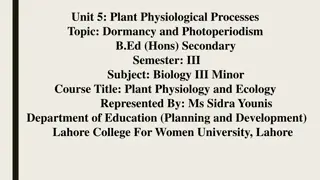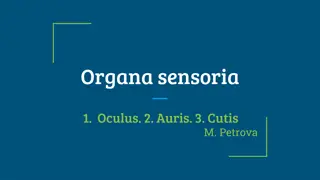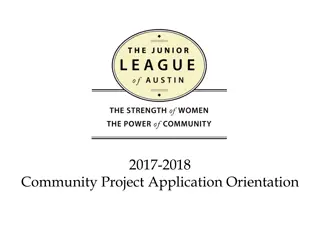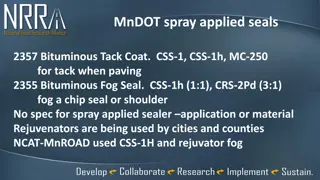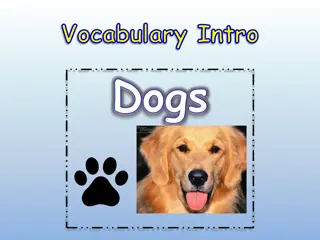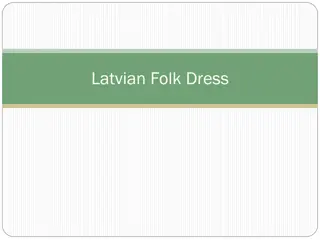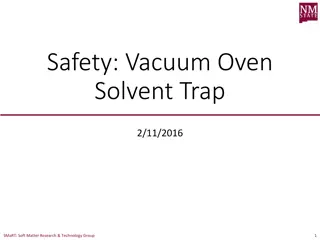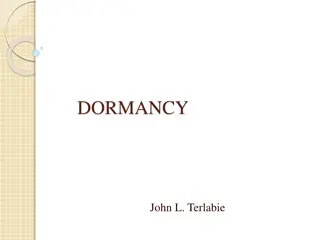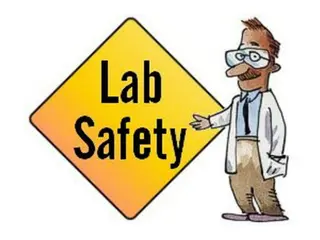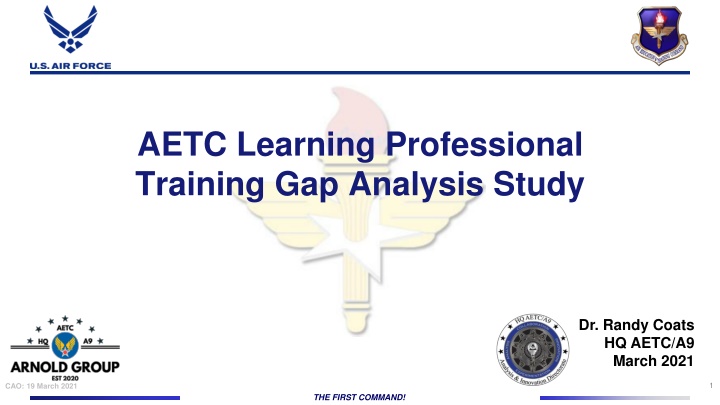
AETC Learning Professional Training Gap Analysis Study by Dr. Randy Coats
Dr. Randy Coats from HQ AETC led a study to assess the current state of AETC learning professional staff's knowledge, skills, and abilities (KSAs) related to learner-centered teaching and learning practices. The study aimed to identify gaps between current KSAs and best practices to inform force development decisions and provide targeted recommendations. The team involved in the study included various professionals from different units, and the study was conducted under the DCOM task to enhance AETC's learning processes.
Download Presentation

Please find below an Image/Link to download the presentation.
The content on the website is provided AS IS for your information and personal use only. It may not be sold, licensed, or shared on other websites without obtaining consent from the author. If you encounter any issues during the download, it is possible that the publisher has removed the file from their server.
You are allowed to download the files provided on this website for personal or commercial use, subject to the condition that they are used lawfully. All files are the property of their respective owners.
The content on the website is provided AS IS for your information and personal use only. It may not be sold, licensed, or shared on other websites without obtaining consent from the author.
E N D
Presentation Transcript
AETC Learning Professional Training Gap Analysis Study Dr. Randy Coats HQ AETC/A9 March 2021 1 CAO: 19 March 2021 THE FIRST COMMAND!
Purpose This is an INFORMATION BRIEFING Briefer: Dr. Randy Coats, HQ AETC/A9 Briefer: Dr. Randy Coats, HQ AETC/A9 2 CAO: DD MmmYY THE FIRST COMMAND!
Overview Issue Team Study (Intent, Methodology) Data Points Gaps & Barriers Recommendations Questions Briefer: Dr. Randy Coats, HQ AETC/A9 Briefer: Dr. Randy Coats, HQ AETC/A9 3 CAO: DD MmmYY THE FIRST COMMAND!
Issue/Problem AETC strategy/guidance emphasize a learner-centric approach to force development (training + education + experience) But We don t know if the AETC workforce has the right KSAs for the shift Briefer: Dr. Randy Coats, HQ AETC/A9 Briefer: Dr. Randy Coats, HQ AETC/A9 4 CAO: DD MmmYY THE FIRST COMMAND!
The Team Dr. Lisa Rich (HQ AETC/A9Z) - Team Lead / Lead Researcher Dr. Scott Migdalski (59MDW) Col Kayrn McKinney (59MDW) Dr. Angie Canada (HQ AETC/A3B) Ms. Dana Horn (HQ AETC/A3B) Mr. Joseph Shoaf (HQ AETC/A5/8) Dr. Stephen Wright (HQ AETC/A5/8) Dr. Beth Heron (HQ AETC/A9Z) Maj. Michael Davis (HQ AETC/A9 SAS) Dr. Mark Conversino (AU) Dr. R. Joel Farrell (AU) Dr. Mahmed Ali (AU) Dr. Brian Davis (2AF) Mr. Andrew Mendoza (19AF) Mr. Matthew Jackson (AFRS) Mr. Michael Romero (AFRS) Briefer: Dr. Randy Coats, HQ AETC/A9 Briefer: Dr. Randy Coats, HQ AETC/A9 5 CAO: DD MmmYY THE FIRST COMMAND!
DCOM Task: Study Intent Inform AETC Force Development (FD) decisions by assessing the current state of AETC learning professional staff KSAs concerning learner- centric teaching and learning practices. Identify gaps between AETC s current state of learning professional KSAs and best practices established by industry, academia, and sister services. Provide recommendations to initiate targeted efforts to address the gaps identified by the study. Briefer: Dr. Randy Coats, HQ AETC/A9 Briefer: Dr. Randy Coats, HQ AETC/A9 6 CAO: DD MmmYY THE FIRST COMMAND!
Learning Professional Defined Learning Professional: any AETC employee, military or civilian, involved in an airman s learning process. Including, but not limited to: Instructors Instructors supervisors Curriculum Developers / Managers Unit leadership up to, and including, squadron/equivalent commanders People who write/approve/evaluate learning-related policies Briefer: Dr. Randy Coats, HQ AETC/A9 Briefer: Dr. Randy Coats, HQ AETC/A9 7 CAO: DD MmmYY THE FIRST COMMAND!
Methodology Literature Review SME Team discussions Survey of Learning Professionals Team effort to develop survey; Anonymous; SurveyMonkey NAF/NAF-Equiv leadership encouraged participation 1,184 responses from an estimated population of 10,000+ Analysis: HQ AETC/A9 Studies & Analysis Squadron, SME Team, formal coordination (2-digit across all Big 6 organizations) Briefer: Dr. Randy Coats, HQ AETC/A9 Briefer: Dr. Randy Coats, HQ AETC/A9 8 CAO: DD MmmYY THE FIRST COMMAND!
DATA POINTS Briefer: Dr. Randy Coats, HQ AETC/A9 9 CAO: DD MmmYY THE FIRST COMMAND!
HQ AETC & Big Six Level Learner-centric KSAs Top Three Proficient KSAs Bottom Three Proficient KSAs Top Three Proficient KSAs Bottom Three Proficient KSAs Air University 1. 2. Encouraging a growth mindset Assessing student performance in a learner-centric classroom Applying learning theories for learner-centric experience 1. Kirkpatrick Model for evaluating the effectiveness of training programs Using gamification to engage and connect learners with course material Learner-centric eLearning curriculum design Kirkpatrick Model for evaluating the effectiveness of training programs Learner-centric eLearning curriculum design Using gamification to engage and connect learners with course material Kirkpatrick Model for evaluating the effectiveness of training programs Learner-centric eLearning curriculum design Using gamification to engage and connect learners with course material 59th MDW 1. 2. Encouraging a growth mindset Assessing student performance in a learner- centric classroom Applying learning theories for learner-centric experience 1. Kirkpatrick Model for evaluating the effectiveness of training programs Using gamification to engage and connect learners with course material Learner-centric eLearning curriculum design Kirkpatrick Model for evaluating the effectiveness of training programs Using gamification to engage and connect learners with course material Learner-centric eLearning curriculum design Kirkpatrick Model for evaluating the effectiveness of training programs Learner-centric experience through competency-based learning Evaluating effective use of technology in the teaching- learning process 3. 2. 2. 3. 3. 3. 2 AF 1. Assessing student performance in a learner-centric classroom Encouraging a growth mindset Applying learning theories for learner-centric experience 1. HQ AETC 1. 2. Encouraging a growth mindset Characteristics of learner- centric teaching and learning Applying learning theories for learner-centric experience 1. 2. 3. 2. 3. 2. 3. 3. 19 AF 1. 2. Encouraging a growth mindset Applying learning theories for learner-centric experience Assessing student performance in a learner-centric classroom 1. AFRS 1. 2. Encouraging a growth mindset Assessing student performance in a learner- centric classroom Using learner feedback to improve and iterate curriculum 1. 3. 2. 2. 3. 3. 3. Highlighted = only 3 were unique to a single org; teaching NAFs had same answers in different order GAPS: (1) Kirkpatrick Model for evaluating the effectiveness of training programs, (2) Learner-centric eLearning curriculum design, and (3) Using gamification to engage and connect learners with course material Briefer: Dr. Randy Coats, HQ AETC/A9 Briefer: Dr. Randy Coats, HQ AETC/A9 10 CAO: DD MmmYY THE FIRST COMMAND!
Sister-Service Standards for Learning Professionals U.S. Navy U.S. Marine Corps U.S. Army U.S. Coast Guard Adopted standards Maintain SME Prep course Demonstrate techniques Maintain SME Prep course Demonstrate techniques Maintain SME Community of Practice Adopted IBSTPI Adopted IBSTPI Instructors/ Instructional Designers Maintain SME Community of Practice Developer Toolbox (TED-T) Adopted Certified Performance Technologist (CPT) designation Developer/Writer Competencies ibstpi: International Board of Standards for Training, Performance, and Instruction Briefer: Dr. Randy Coats, HQ AETC/A9 Briefer: Dr. Randy Coats, HQ AETC/A9 11 CAO: DD MmmYY THE FIRST COMMAND!
GAPS & BARRIERS Due to the low response rate from non-2AF units, the gaps identified in the survey cannot be quantifiably generalized to the entire Command. Additional study would be required to validate these gaps in AU and 19 AF. Briefer: Dr. Randy Coats, HQ AETC/A9 12 CAO: DD MmmYY THE FIRST COMMAND!
Gaps Gap #1: Common definition of learner-centric approach Gap #2: Role-based framework of Learning Professional core competencies Gap #3: Consistent and/or integrated approach, where appropriate, to training and developing AETC learning professionals Gap #4: Continuing Professional Education opportunities Briefer: Dr. Randy Coats, HQ AETC/A9 Briefer: Dr. Randy Coats, HQ AETC/A9 13 CAO: DD MmmYY THE FIRST COMMAND!
Gaps Gap #5: Training and support to integrate educational technologies Gap #6: Single source of information for Learning Professional development and/or upskilling opportunities Gap #7 (*): Top 3 Foundational Competency gaps: Fostering Innovation, Strategic Thinking, and Change Mgmt Gap #8 (*): Top 3 learner-centric competency gaps: Kirkpatrick Model for evaluating training, learner-centric eLearning curriculum design, and using gamification to engage and connect learners with course material (*) Gap based on survey data only; may not generalize beyond 2 AF Briefer: Dr. Randy Coats, HQ AETC/A9 Briefer: Dr. Randy Coats, HQ AETC/A9 14 CAO: DD MmmYY THE FIRST COMMAND!
Barriers Barrier #1 (*): Most significant barriers to integrating/using educational technology: Availability, internet service (AFNet), and training Barrier #2 (*): Most significant barriers to Learning Professionals ongoing development: Unaware of opportunities, and time (*) Based on survey data only; may not generalize beyond 2 AF Briefer: Dr. Randy Coats, HQ AETC/A9 Briefer: Dr. Randy Coats, HQ AETC/A9 15 CAO: DD MmmYY THE FIRST COMMAND!
RECOMMENDATIONS Briefer: Dr. Randy Coats, HQ AETC/A9 16 CAO: DD MmmYY THE FIRST COMMAND!
Recommendations Recommendation #1: Develop and codify a definition of learner-centric training and education Recommendation #2: Explore and define role-based, core learning professional competencies common across AETC mission areas Recommendation #3: Charter a Working Group to create a community of interest and shared content for learning professionals Recommendation #4: Establish role-based continuing professional education opportunities for learning professionals Recommendation #5: Consider leveraging industry/academia best practices or commercially-available content and courses for learning professional development Briefer: Dr. Randy Coats, HQ AETC/A9 Briefer: Dr. Randy Coats, HQ AETC/A9 17 CAO: DD MmmYY THE FIRST COMMAND!
Next Steps Coordinated, MAJCOM-wide effort to implement the recommendations We know HQ AETC/A3B is already working on all five recommendations We suspect others are also working on one or more of the recommendations Next step: synergize efforts, improve collaboration, minimize duplication What can YOU do? Get involved and collaborate across organizational and Big 6 lines Use this report to support resource requests for Learning Professional development Briefer: Dr. Randy Coats, HQ AETC/A9 Briefer: Dr. Randy Coats, HQ AETC/A9 18 CAO: DD MmmYY THE FIRST COMMAND!
Bottom Line AETC Learning Professional Training Gap Analysis Timely topic Great participation (SME team, surveys, 2-digit coord) Valuable insights Lots of work to do Briefer: Dr. Randy Coats, HQ AETC/A9 Briefer: Dr. Randy Coats, HQ AETC/A9 19 CAO: DD MmmYY THE FIRST COMMAND!
DISCUSSION HQ AETC/A9 s Innovation Community: https://community.apan.org/wg/aetc/ LP Website: https://www.learningprofessionals.af.mil/ LP Facebook Page: https://m.facebook.com/AFlearningprofessionals/ LP Facebook Group: Search on Facebook for AF Learning Professionals Group Monthly Learning Professional Q&A Recorded events: https://www.learningprofessionals.af.mil/Events/ Briefer: Rank Name, Office Symbol 20 THE FIRST COMMAND!







